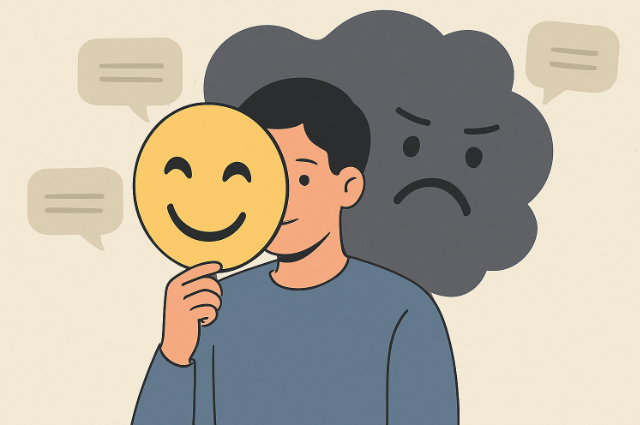
We often hear the advice, “Just stay positive.” At first, it sounds harmless—even supportive. After all, who doesn’t want to focus on the brighter side of life? But when positivity is pushed on people regardless of their struggles, it becomes harmful. This is called toxic positivity—the denial, ignoring, or invalidation of real emotions. Instead of helping, it silences people, pressures them to suppress pain, and leaves them feeling isolated.
Positivity in its true form gives strength and hope. But toxic positivity, which demands constant smiling through struggles, is more harmful than helpful. It prevents emotional honesty, delays healing, and creates a culture where vulnerability is seen as weakness.
What is Toxic Positivity?
Psychologists describe toxic positivity as the belief that no matter how hard life gets, we should always stay positive. It’s the cultural obsession with “good vibes only,” where anything negative is dismissed. Unlike healthy optimism, which accepts life’s ups and downs, toxic positivity forces people to hide their true feelings and pretend to be happy.
Examples we see every day:
- Telling someone with depression, “Just think happy thoughts.”
- Responding to stress with, “At least you have a job.”
- Comparing struggles with, “Others have it worse, be grateful.”
- Though well-intentioned, these responses invalidate emotions. They send the message that sadness, anger, or fear is unacceptable, pushing people to hide rather than express their feelings.
Why is Toxic Positivity Harmful?
Invalidates emotions: Grief, anger, sadness, and disappointment are natural. Being told to “just be positive” makes people feel weak or wrong for experiencing them.
Delays healing: Research in grief counseling and trauma recovery shows that healing requires expressing emotions. Ignoring them doesn’t erase pain—it resurfaces later as stress, anxiety, or illness.
Creates silence and shame: When people fear dismissal, they stop opening up. This leads to guilt—“Why am I sad when I should be grateful?”—fueling a cycle of suffering.
Social media pressure: Platforms filled with “perfect lives” and “good vibes only” slogans amplify toxic positivity. People compare their struggles to curated happiness, deepening loneliness.
Turns happiness into performance: In workplaces, employees are told to keep smiling despite stress. In relationships, problems are avoided to “stay positive.” Life isn’t only about joy; it’s a mix of highs and lows. Pretending otherwise strips people of authenticity.
The Alternative: Balanced Positivity
The opposite of toxic positivity is not negativity—it’s emotional honesty. Hope and optimism should coexist with reality.
Instead of “Cheer up,” say: “I know this is really hard, and it’s okay to feel this way.”
This validates emotions and creates safety.
Balanced optimism sounds like: “This is tough, but I believe you can handle it.” It offers encouragement without denying reality.
As researcher Brené Brown notes, true strength lies in vulnerability. Allowing ourselves to feel emotions openly builds authentic growth and deeper human connection.
A Personal Reflection
I once saw how toxic positivity hurt a friend. She was stressed at work and doubting her abilities. Instead of empathy, someone told her: “Be thankful—you have a job many would want.” Instead of comfort, she felt guilty and silenced. What she needed was space to express her burnout, not forced gratitude.
This is the hidden damage of toxic positivity: it shuts conversations before they begin. People don’t always need solutions—they need to feel heard.
Conclusion
Toxic positivity may look cheerful, but it’s deeply harmful. It invalidates emotions, delays healing, fuels loneliness, and pressures people to fake happiness.
Real positivity is not about ignoring difficulties—it’s about acknowledging them while holding on to hope. Healing begins not with denial but with honesty. Instead of “Look on the bright side,” we should say: “It’s okay to feel this way, I’m here for you.”
True connection is built not on toxic positivity, but on the courage to embrace all emotions—joy and sorrow alike.
